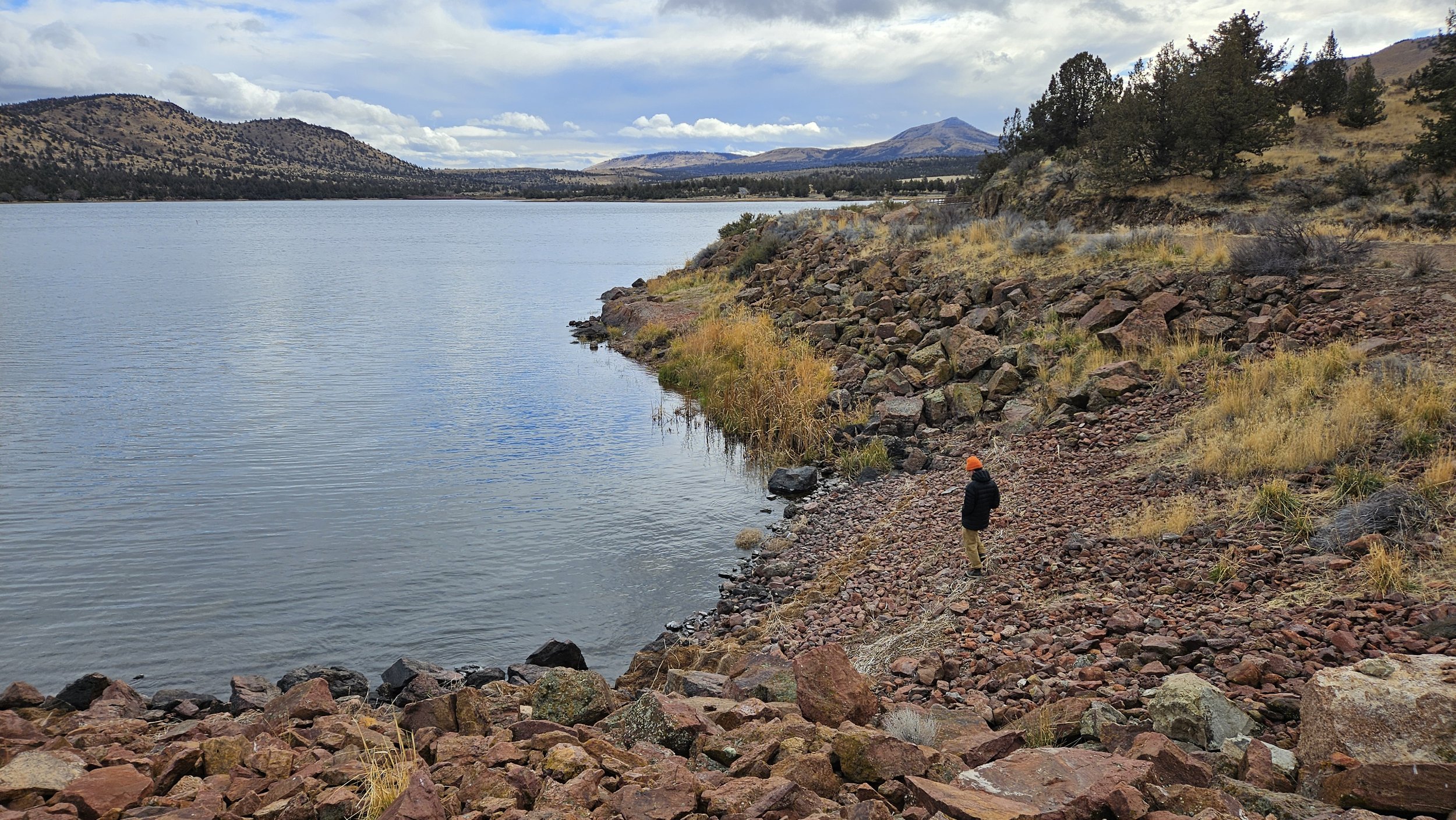Three Birding Hotspots Near Terrebonne
Good Earth for Birding Variety
By Lace Thornberg, Communications Director
With wetlands, rivers, canyons, and sagebrush steppe, the open spaces and public lands near Terrebonne offer plenty of variety for both migratory and resident bird species to thrive.
And, with three prime birding locations — the Crooked River Wetlands, Smith Rock State Park, and Borden Beck Wildlife Preserve — all within 25 miles, a birder can put together a rewarding excursion with only short drives between sites, or even make an active day of it and bike between one or more of these sites on reasonably bike-friendly roads.
-
But all of these sites would be acessible year-round
-
Bonus: Cool geologic features, wildflowers, and a variety of habitat types
-
With plenty fo room to add in some hiking, picnciking, and riverside lounging
A Wetland Oasis
The Crooked River Wetlands is a landscape engineered to attract birds. Photo: Joan Amero
To the east of Terrebonne, near Prineville, the Crooked River Wetlands Complex is a thoughtfully designed habitat featuring a series of different sized ponds, from small and shallow to large and deep. What appears at first glance to be a refuge tailor-made just for birds, this constructed wetlands is actually an ingenious, cost-effective solution to Prineville’s wastewater treatment needs as a growing community. Waterfowl commonly spotted in spring include Ruddy Ducks, American Wigeon, and Gadwalls. For shorebirds, you’re likely to see Wilson’s Phalaropes, Dunlin, Least Sandpiper, and many others. If you hear a Killdeer, wait to see if it will do its signature “Look at me - I’m hurt” routine; their broken-wing display is designed to lure predators away from its nearby nest. If possible, time your visit for the first or third Saturday of the month (April through September) to join in a guided wetlands walk led by East Cascades Bird Alliance.
Dunlin (left) and Ruddy Ducks (right) are two of many commonly seen shorebirds and waterfowl at the Crooked River Wetlands. Photos: Chuck Gates
More than 175 active bird species live in and migrate through Smith Rock State Park. Photo: EB Adventure Photography
Rocks for Raptors, Sage for Songbirds
Mergansers. Photo: David WIllingham
Just a short ride or drive past the wetlands is Smith Rock State Park. You’ve been to Smith before. Probably 100 times. But, have you been there just to look for birds? With your eyes and ears tuned to the sagebrush, the river, and the cliffs, you’ll notice more of the native bird species that live here than you might otherwise.
When you arrive, look for adorable species like Canyon Wren and California Quail hiding in the sagebrush. Then, as you descend into the park, watch the meandering Crooked River for American Dippers, Common Mergansers, or the sleek black-and-white Barrow’s Goldeneye. In the cliff sides, look for White-throated Swifts, and, in the rocks, Rock Wrens. Cliffs on the park’s north side support nesting Golden Eagles, often visible through binoculars from a point midway up the Misery Ridge Trail. These are just a few of the many birds species that swirl near and above Smith Rock’s cliffs.
If you aren’t starting your day at the Wetlands, consider arriving at Smith early to avoid midday crowds.
The Deschutes River adopts a languid pace through the Borden Beck Wildlife Preserve. Photo: Joan Amero
A Quiet Retreat
The Borden Beck Wildlife Preserve is tucked away in Redmond’s Lower Bridge Valley. After the hubbub of Smith, you’ll savor the tranquility here, where the Deschutes River moves placidly through grassy banks and basalt outcroppings. The preserve's mix of riparian and juniper woodland habitats supports a variety of birdlife, making it a worthwhile final stop on your Terrebonne birding route.
Notably, a large number of passerines wing this way on their spring migrations. Watch for thrushes, flycatchers, vireos and warblers and other perching birds or songbirds. Spring is also swallow-time; expect Bank Swallows, Barn Swallows, and Cliff Swallows. Large birds of prey, like Northern Harriers, Osprey, and Bald Eagles, frequent this area, as do the small and brightly colored songbirds Bullock’s Oriole, Black-headed Grosbeak, and Lesser Goldfinch.
Watch Between Sites, Too
Red-tailed Hawks are formidable hunters, and the most widespread hawk species in North America. Photo: Greg Chapel
Along with the region’s public parks and preserves, Central Oregon's open spaces are vital for bird populations and provide essential habitat for feeding, migration, and nesting sites. Think of the Red-tailed Hawks often seen in the margins of farm fields. Central Oregon LandWatch advocates for responsible land use practices that are compatible with and contribute to the conservation of our region’s wild lands and rural areas. Preserving habitat near cultivated areas maintains ecological balance, and, in the case of some threatened birds, can help ensure the survival of the species. Habitat preservation can be good for farms, too; a recent UC Davis study found that farms with surrounding natural habitat experience the most benefits from birds, including less crop damage.
As you travel between these birding hotspots, Crooked River Wetlands, Smith Rock State Park, and Borden Beck Wildlife Preserve, you’ll be washed over with the area’s natural beauty and wild abundance. Hopefully, you’ll come away with a deeper appreciation for the importance of Central Oregon's public parks and open spaces, too.











